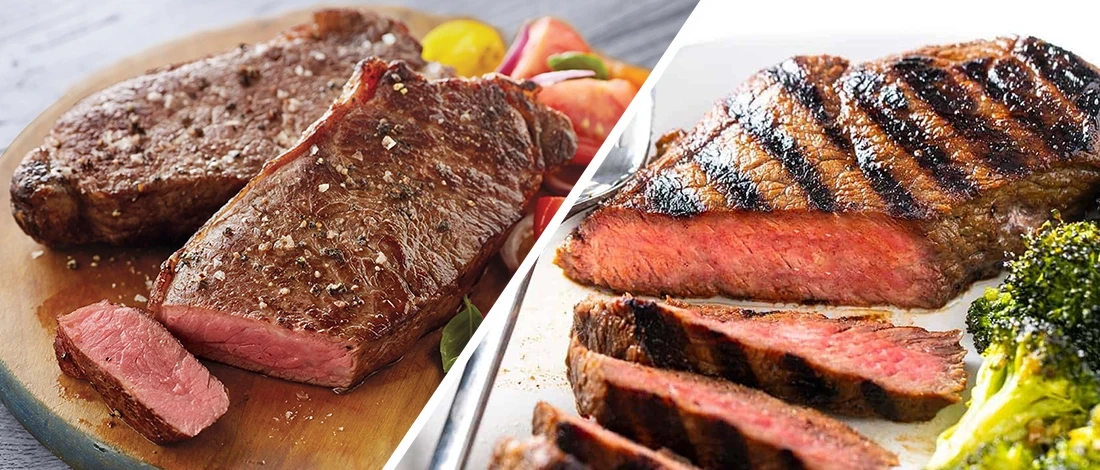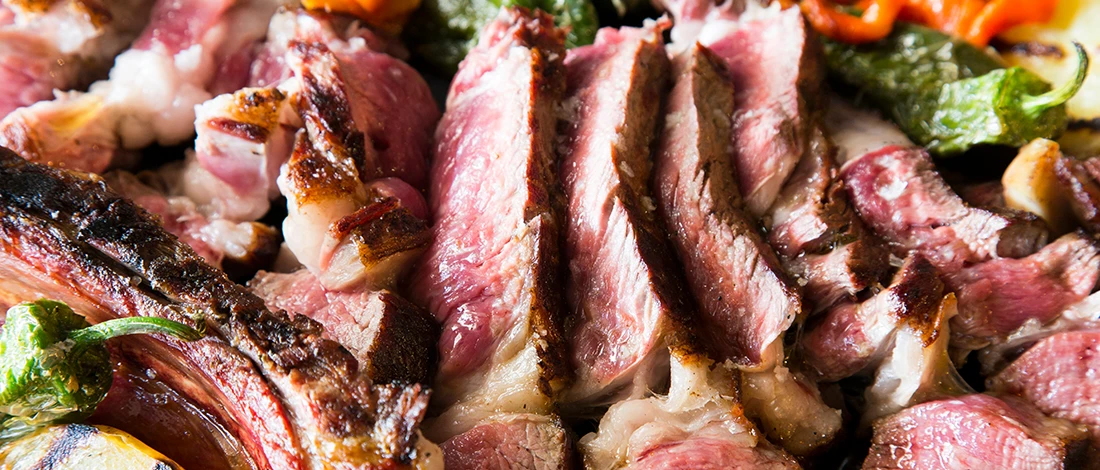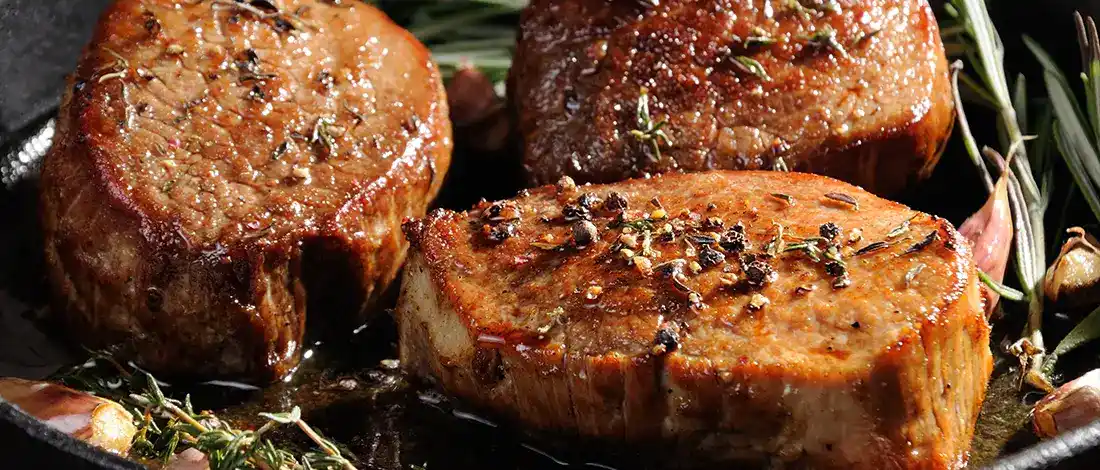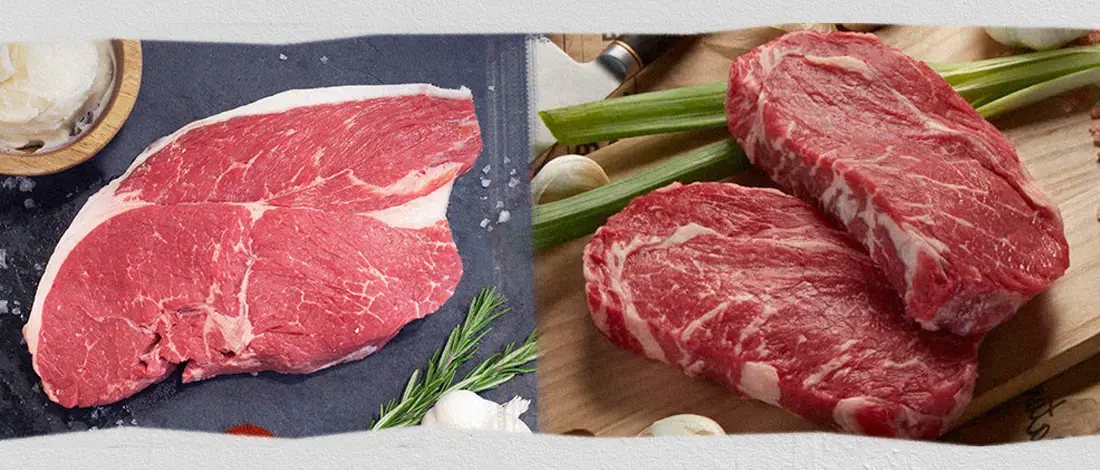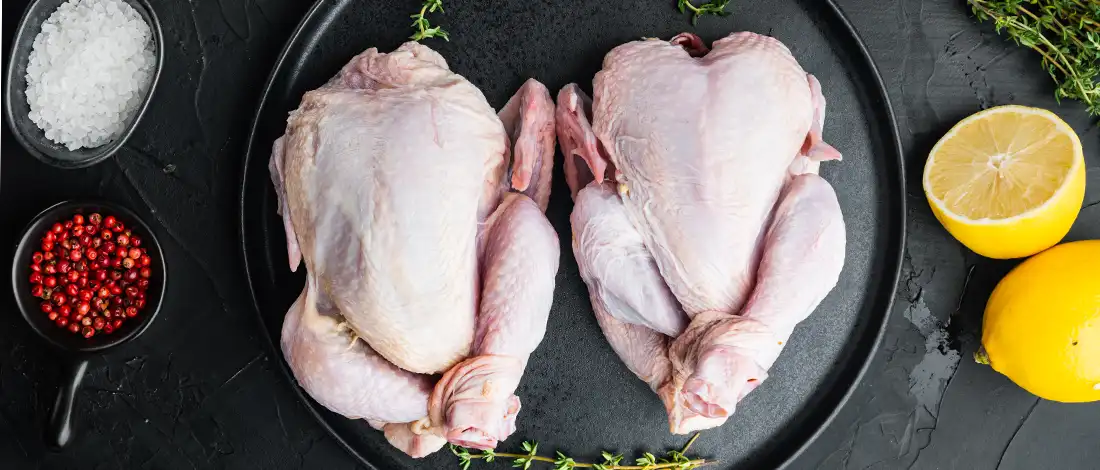As a seasoned chef and a steak enthusiast, I have spent years perfecting the art of cooking and experimenting with different cuts of meat.
Through my experience, I have learned that the debate between sirloin and filet mignon is never-ending.
Carnivore Style’s team has also spent years researching and refining our understanding of these cuts to give you the best insights.
I will use my expertise to provide an in-depth analysis of both sirloin and filet cuts of meat and evaluate their differences and similarities so that you can make an informed decision when choosing your next steak.
Quick Summary
- Sirloin is flavorful, while filet mignon is prized for its tenderness.
- Sirloin is excellent for grilling, while filet mignon is more versatile.
- Sirloin is lower in price than filet.
5 Differences Between Sirloin and Filet Mignon
When it comes to a mouth-watering steak, sirloin and filet mignon are often compared.
Both lean cuts are popular among steak enthusiasts but have distinct differences in flavor, texture, price, and nutrition.
Regardless of your choice, I highly recommend obtaining your steaks from a reputable company. ButcherBox is a good place to start because this meat delivery company sends high-quality, hormone and antibiotic-free beef straight to your doorstep.
1. Location of Cut
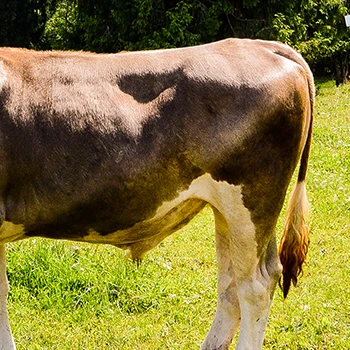
Both filet mignon and sirloin are steaks cut from the area near the animal's back. While they are close in proximity, their exact locations differ slightly.
The sirloin cut is higher on the back and closer to the rump in an area known as the sirloin primal [1].
Positioned in front of the hind leg, the sirloin butt is a larger cut usually divided into top and bottom steaks. Other cuts from this region include tri-tip, bavette, and coulotte.
The filet mignon arises from the short loin (the animal's tenderloin muscle). This is closer to the head than the sirloin muscle and is a less exercised area near the ribs and spine.
This primal also yields the porterhouse, T-bone steak, and New York strip steak [2]. The filet mignon is a smaller, tender cut, commonly known as filet mignon.
2. Flavor
The taste of filet mignon has been described as "melt in your mouth" due to its exceptionally tender nature.
It lacks some of the beefy taste in sirloins but nonetheless offers a flavorful presence. This is because it has little marbling compared to sirloin and is a lean cut of beef.
On the other hand, sirloin steaks present more marbling and intramuscular fat content, making them incredibly juicy when cooked right.
Also, sirloin steaks offer more flavor - one that many regard as the "classic" natural flavor of a steak.
Both steaks tend to draw out their natural flavors through proper cooking techniques.
In the case of filet mignon, this may be pan-searing or grilling in olive oil with kosher salt. For top sirloin steak, it might be reverse searing or grilling with a flavorful dry rub or a marinade to help break down the connective tissue.
3. Fat Content and Marbling
Sirloin is a lean steak with a moderate fat content and a bit of marbling, contributing to its flavor. It has around 10 grams of fat per serving, with 4 grams of saturated fat. However, sirloin is leaner compared to other high-fat cuts like ribeye.
Filet, on the other hand, is leaner with no marbling and minimal fat. 3 ounces of this cut has around 15g of total fat, including 6 grams of saturated fat [3]. Its low-fat content means it's less flavorful but more tender.
4.Texture and Tenderness
You can easily differentiate between Sirloin and filet by their texture. Sirloin is slightly tougher compared to filet. While it has a firmer texture, it can become tender if cooked properly.
Fielt is, on the other hand, exceptionally tender. It’s one of the softest lean steak cuts you can find. This cut practically melts in my mouth, and is my to-go option in case I want something juicy, soft, and easy to cook.
5. Availability and Cost
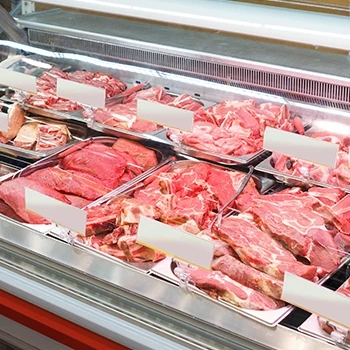
Filet mignon is generally more expensive than sirloin due to its higher quality cut and less availability than regular cuts like sirloin. In fact, you get two to four times more sirloin than filet mignon from a carcass.
Thus, a filet mignon is found frequently in steak houses, though you can find both cuts at the butcher or grocery store.
The store may label the filet as beef tenderloin steak, but it is the same cut of meat you would get at the steak house.
However, top sirloin steaks are affordable cuts that provide exceptional flavor without breaking your wallet at a high price point. Top sirloins can cost $6.00 per pound less than filets at the supermarket [4].
Top sirloin steaks are an excellent option for a casual weeknight meal or when you cook for a large group. On the other hand, filet mignon is perfect for a special occasion or a romantic dinner for two.
"The sirloin steak is the heart and soul of American steak cuisine."
- Bobby Flay, American Chef
Filet Mignon vs Sirloin Cooking Tips
Cooking methods can also affect the flavor profile and tenderness of each cut.
You should cook sirloin steak grilled or pan-fried over medium-high heat and cook to medium-rare or medium. Top sirloin is a forgiving cut of meat that can also be roasted in the oven instead of grilled.
On the other hand, it is best to cook filet mignon using high-heat methods such as grilling, broiling, or cast-iron skillet searing. Because it is so low in fat, this steak is easy to overcook.
Thus, cooked filet mignon should be medium-rare or rare. If you go too much longer than that, you risk the tender meat drying out and becoming tough and chewy.
Regardless of the cooking method, it is essential to cook either cut to a minimum internal temperature of 145°F for food safety [5].
To achieve a perfectly cooked steak, it is recommended to use a cooking thermometer to ensure it is prepared to the correct internal temperature.
Also Read: New York Strip vs Sirloin
Filet Mignon vs Sirloin: Nutritional Value
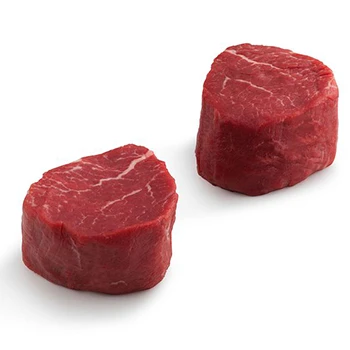
Filets mignon has less fat content than other cuts, including those from prime ribeye or porterhouse steaks - meaning they are naturally lean steak cuts.
The tender cut is ideal for those looking for a lighter fare without compromising on flavor.
That said, the top sirloin steak cut has a higher fat content, with approximately 5.2 grams of saturated fat per 100 g serving, compared to filet mignon, which has only 2.1 grams per 100 g serving [6,7].
Sirloin steaks also have more calories per serving: 201 calories compared to 142 calories in a filet.
However, both filet mignon and sirloin are excellent sources of protein and essential vitamins and minerals, such as vitamin B6, vitamin B12, iron, and zinc.
They also have good amounts of selenium, phosphorous, magnesium, and potassium [8].
Sirloin vs Filet Interchangeability
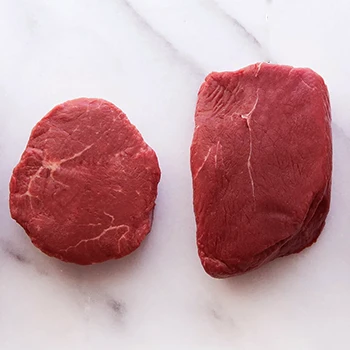
Top sirloin and filet have different characteristics, so they may not be interchangeable in all recipes.
Sirloin steaks are leaner and tougher than filet, making it a good choice for grilling, broiling, or sautéing. Top sirloin is a versatile cut often used in dishes such as steak fajitas, stir-fries, and stews, where the more delicate taste of a filet would be lost.
On the other hand, a filet mignon is the most tender steak cut and has a lighter flavor profile and delicate texture. It is often served as a solo steak with olive oil, kosher, salt, and butter and served with roasted potatoes.
It is also used in dishes such as Beef Wellington. In this case, the rougher texture of the sirloin would result in a chewier texture that does not fit the intended meal.
Overall, both cuts have a place in your kitchen depending on your intended end use. Experimenting with different cooking methods and recipes can help you choose.
FAQs
Is Filet Mignon a Sirloin?
No, filet mignon is not a sirloin. Although both steaks are cut from the area near the animal's back, the sirloin is higher on the back and closer to the rump in an area known as the sirloin primal, while the filet arises from the short loin.
Why Is Filet Mignon More Expensive Than Sirloin?
Filet mignon is more expensive than sirloin because it is obtained from the part of the cow that is rarely used (tenderloin) and accounts for less than 1% of the total weight of the carcass.
Is Sirloin As Tender As a Filet?
No, sirloin is not a tender cut as a filet mignon. Because it has so little connective tissue and low fat content, filet mignon has a very tender texture and is considered the most tender of all steaks.
At Carnivore Style, we’re dedicated to helping you find the best cuts of meat for your diet and cooking needs. Explore our other articles for expert advice on perfecting your steak game and making the most of your carnivore lifestyle.
References:
- https://www.beefitswhatsfordinner.com/cuts/cut/2948/sirloin-primal
- https://www.beefitswhatsfordinner.com/cuts/cut/44453/loin-primal
- https://www.mychicagosteak.com/steak-university/filet-mignon-nutrition
- https://www.ams.usda.gov/mnreports/lswbfrtl.pdf
- https://www.health.state.mn.us/people/foodsafety/cook/cooktemp.html
- https://fdc.nal.usda.gov/fdc-app.html#/food-details/173990/nutrients
- https://fdc.nal.usda.gov/fdc-app.html#/food-details/168726/nutrients
- https://www.beefresearch.ca/topics/nutritional-qualities-of-beef


